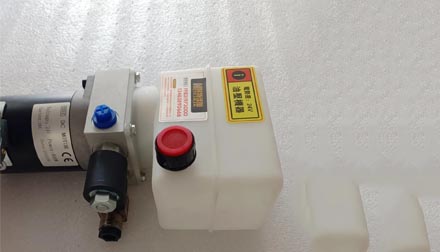Dec . 10, 2024 08:02 Back to list
rod hydraulic cylinder product
Understanding Rod Hydraulic Cylinders Functionality, Design, and Applications
Hydraulic cylinders are essential components in various industries. Among them, rod hydraulic cylinders play a significant role in providing controlled motion and force. This article explores the functionality, design, and applications of rod hydraulic cylinders, elucidating why they are a central choice for many engineering projects.
Functionality of Rod Hydraulic Cylinders
A rod hydraulic cylinder consists of a cylinder barrel, a piston, and a rod that extends from the piston. The fundamental principle of operation is based on Pascal's Law, which states that pressure applied to a confined fluid is transmitted undiminished in all directions within the fluid. In the context of hydraulic cylinders, when hydraulic fluid is pumped into the cylinder, it pushes against the piston, causing it to move. This movement is transferred through the rod, which can perform work on cargo or machinery attached to it.
The movement can be linear, allowing for precise control over machinery or heavy loads. Depending on the system's design, a rod hydraulic cylinder can extend or retract based on pressure and fluid dynamics, offering versatile functionality in applications that require pushing or pulling.
Design Considerations
The design of rod hydraulic cylinders is crucial in optimizing performance and ensuring durability. A well-designed hydraulic cylinder considers several factors
1. Material Selection The materials used in constructing hydraulic cylinders must withstand extreme pressures and forces. Common materials include high-strength steel and aluminum alloys, which offer the necessary tensile strength and resistance to corrosion.
2. Rod Design The rod must be designed meticulously, often featuring surface treatments such as hard chrome plating to enhance wear resistance. The rod diameter and length are also critical, influencing the cylinder's load capacity and stroke length.
3. Seals and Gaskets Effective sealing is vital to prevent hydraulic fluid leaks, which can lead to inefficiencies or hazardous situations. The selection of seals involves considering the operating environment, including temperature variations and exposure to chemicals.
rod hydraulic cylinder product

4. Mounting Options Rod hydraulic cylinders can be designed with various mounting styles (e.g., flange, pin, trunnion) to cater to different installation scenarios. The mounting choice can affect the overall performance and ease of integration into existing systems.
Applications of Rod Hydraulic Cylinders
Rod hydraulic cylinders are prevalent in numerous sectors thanks to their adaptability and efficiency. Some common applications include
1. Construction Machinery Excavators, bulldozers, and loaders rely heavily on hydraulic cylinders to perform jobs such as lifting, digging, and pushing materials. The ability to generate high force with precision makes them indispensable in construction.
2. Material Handling In manufacturing and warehouse settings, hydraulic cylinders are used in conveyance systems, forklifts, and pallet jacks to move heavy materials safely and efficiently. Their reliability ensures smooth operations during high-demand situations.
3. Automotive Industry Hydraulic cylinders are frequently used in automotive applications, including lifting mechanisms for car washes and assembly line robots for managing parts. Their ability to generate significant force allows for the efficient manipulation of large components.
4. Aerospace In aerospace applications, hydraulic cylinders serve critical functions in landing gear, cargo doors, and actuation systems. Their ability to function in extreme conditions makes them ideal for this highly demanding industry.
5. Agriculture Agricultural equipment, such as tractors and harvesters, utilizes rod hydraulic cylinders to provide necessary force for plowing, lifting, and other essential farming tasks. These cylinders enhance productivity and operational efficiency in agricultural practices.
Conclusion
Rod hydraulic cylinders are a vital component in a wide range of applications, offering reliable and efficient means of transferring motion and force. Their versatile design combined with robust functionality makes them indispensable in numerous sectors, from construction and material handling to aerospace and agriculture. As industries continue to evolve and demand more sophisticated machinery, the significance of rod hydraulic cylinders will undoubtedly grow, ensuring they remain at the forefront of engineering solutions. Understanding their mechanics not only highlights their importance but also underscores the necessity of innovation in hydraulic technology for future applications.
-
Fork Lift Power Units - Hebei Shenghan | Efficiency, Reliability
NewsJul.13,2025
-
1.5-Ton Turbocharged Cylinder-Hebei Shenghan|Hydraulic Solution,Energy Efficiency
NewsJul.13,2025
-
Auto Hoist Power Units-Hebei Shenghan|Efficiency&Industrial Lifting
NewsJul.13,2025
-
Double Acting Power Units-Hebei Shenghan|Hydraulic Solutions,Industrial Efficiency
NewsJul.13,2025
-
1.5 Ton Lifting Cylinder 70/82-40-290-535 - High-Performance Hydraulic Solution | Hebei Shenghan
NewsJul.13,2025
-
Fork Lift Power Units - Hebei Shenghan | Efficiency&Reliability
NewsJul.13,2025
